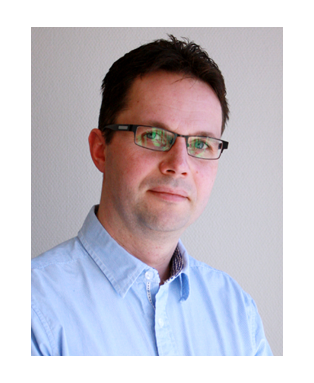
Paco Ortiz of Inserma Anoia (INS) – Spain and Jakob Blomgren of RISE Research Institute of Sweden (RISE)
 | Paco Ortiz, INS Area of Expertise: Recycling sorting machines, robotics and industrial automation. Role in the project: Partner |
 | Jakob Blomgren, RISE Area of Expertise: Sensors and sensor system integration, with a focus on magnetic sensors. Role in the project: Partner |
How did you learn about the project idea and become a partner?
Jakob: Together with many other partners in the SUSMAGPRO project, we were involved in a previous EU FP7 project called REMANENCE, where we explored ways to automatically pre-sort magnetic waste using sensor systems. SUSMAGPRO is a natural next step towards a full-scale rare earth recycling process.
Paco: We also participated in the EU FP7 REMANENCE project and some partners agreed to go one step further and continue with this line of work.
What are your roles in the project?
Paco: Inserma is a company with a long history in the research and development of industrial machines, and in particular recycling machines for the separation of materials. In SUSMAGPRO, we therefore contribute to the integration and development of the systems that detect and separate the different fractions.
Jakob: RISE’s role in the project is to develop and build efficient sensor systems to identify, localize and concentrate Rare Earth magnets from waste material. The RISE team has many years of experience in sensor principles, using hardware and software design to build complete measurement systems and to use data analysis to combine information from multiple sources.
How do your activities contribute to the overall project goal of establishing a circular economy of rare earth magnets?
Paco: The first obstacle in any raw material recycling / reuse process is the separation of the respective material from all the elements surrounding it. In SUSMAGPRO, this obstacle can be overcome through our contribution.
Jakob: The project will considerably scale up the volumes of recovered magnet material to create a recycling supply chain for rare earth magnets. The actual HPMS recycling process is already efficient and well-developed, but a bottleneck in the recycling flow is to get access to enough material. The Rare Earth containing magnets are dispersed in a large mix of different waste materials. Magnet localization and extraction must be done in an efficient way to keep the cost of the recycled material below or at least not significantly higher than the cost of virgin material.
What do you hope and expect will be the main impact of the project and why?
Paco: In my opinion, firstly, there is the wonderful fact that we can reuse parts of waste electrical and electronic equipment and thus reduce the impact on the environment and save natural resources. Secondly, there is also the strategic aspect of reducing Europe’s dependency on other countries when it comes to these critical materials. Surely, the project can contribute to improving Europe’s position in that regard.
Jakob: The project will provide an infrastructure for magnet recycling that will be ready to supply a significant amount of recycled magnet material to European magnet producers.
Regarding your tasks, what is the greatest callenge in the project?
Paco: The disassembly of the magnets and leaving them in a perfect state for later treatment. All this within the shortest possible timeframe and with the least possible manipulation.
Jakob: Incoming scrap material is often an inhomogenous mixture of items of various materials and shapes. Even with manual pre-sorting of known magnet containing product categories (HDDs, loudspeakers, game controllers, etc.), there is a large variety when it comes to the individual shapes and interior designs of the objects. This makes automated handling and efficient magnets extraction a big technical challenge.
If you had one wish regarding the project, what would it be?
Paco: To make it a success and replicate it on a larger scale, with maximum efficiency and quality.
Jakob: I really wish to see that the technologies and infrastructure developed in this project lead to a significant amount of recycled Rare Earth material being used in the production of new magnets. Producers, consumers and legislators are rapidly getting more and more aware of the need to transform our use of resources and materials into circular flows.
